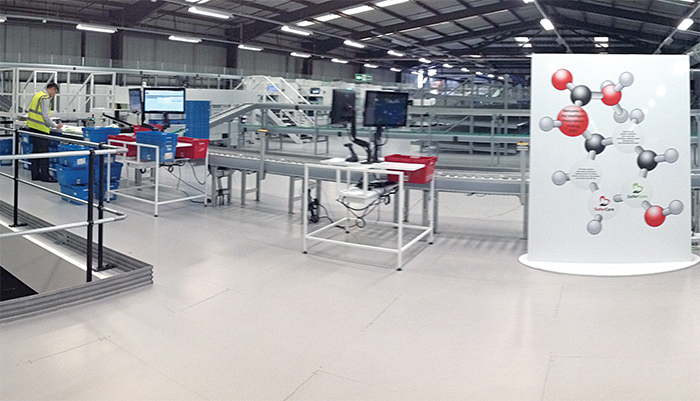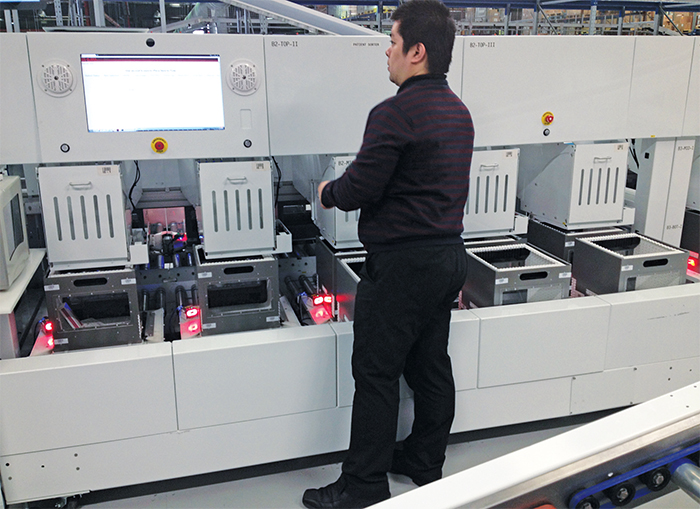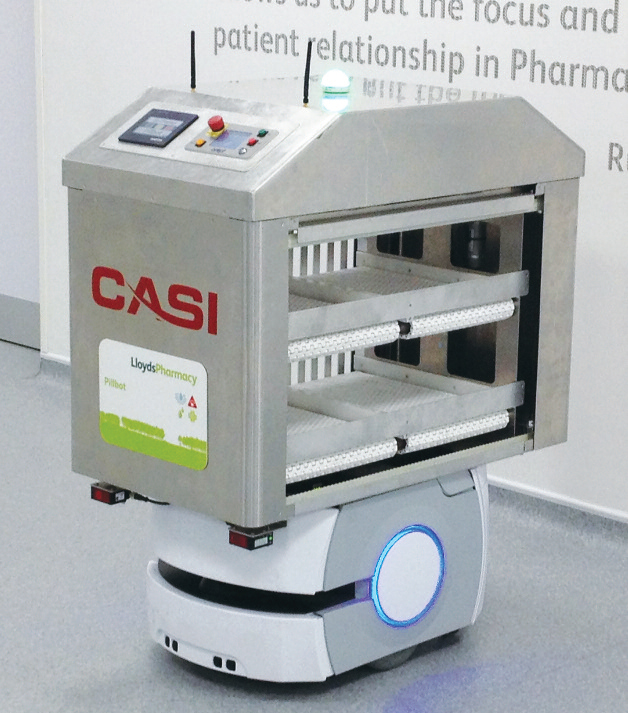Developing pharmacy processes for the future
In Interviews
Follow this topic
Bookmark
Record learning outcomes
New technology that accurately assembles prescriptions on a large scale will allow pharmacy and the pharmacist’s role to grow, Celesio UK’s managing director tells P3

At Celesio UK’s Warrington site, a “hub” where products are picked and packed for delivery out to the company’s pharmacies, an entire floor is taken up by their prototype Prescription Assembly Solutions (PAS) technology. It’s an automated system for assembling prescriptions that the company says will be a key development for the company’s – and pharmacy’s – future.
There’s a quote on the wall – words from managing director Cormac Tobin - that says: “Our pharmacists weren’t educated to move boxes, they were educated to change lives, and PAS gives our pharmacists valuable time to intimately engage with our patients.”
In the future, pharmacists won’t be spending time selecting products in the pharmacy dispensary, he says. A patient’s prescription will be put together at the hub, and pharmacists in store will have more time to spend discussing medicines use with the patient.
It’s a trend that LloydsPharmacy has been looking at for nearly 10 years, when they first started using a hub and spoke system for some of their stores. The company decided they would do things in a different way. It’s a move that has improved pharmacy performance and has improved pharmacists’ and pharmacy teams’ job satisfaction, says Mr Tobin.
Making the best use of pharmacist’s time, enabling them to offer services and to spend more time with patients, is priority, he says. “Looking from a commercial sense, getting the right people with the right knowledge in the right place is very important for a business. It’s very important how you do things.”
Celesio UK has four hubs, in Warrington, Glasgow, Redditch and Bristol, that service 228 pharmacies weekly for about 30 per cent of their repeat prescription business.
End to end solution
The company is now looking to see how they can make this process “more efficient and effective” using new technology that will assure “confidence and safety” in an automated process, and working together to achieve “an end to end solution.”
The PAS system that is being developed doesn’t take away from the pharmacist’s role, he stresses, as all the hub is doing is “putting things in bags”. “You are assembling something to be dispensed by a clinically professional pharmacist, whose knowledge and expertise will take it from there. All we are doing is putting things in bags, as you would buy a box from the manufacturer.”
Celesio UK is looking to make “a major step change to help the industry,” says Mr Tobin. The company has invested significantly to look at new systems and processes, that it hopes that independent pharmacy customers will ultimately also be able to benefit from.
“We decided, let’s look at our experiences, look internationally at what’s available, and put together something that will service the needs of pharmacies across the UK: for pharmacists, hospitals and patients.”
The initiative gels with the aspirations of England’s chief pharmacist Keith Ridge and the changes proposed in the current consultation with the Department of Health to make greater use of hub and spoke dispensing across the sector. Mr Tobin says that the company wants to support independents at a time of pharmacy funding cuts, and help promote change, describing the project as benefit for the whole pharmacy sector.
“We can’t continue to do what we are doing. Let’s give independents a level playing field, too, where they can plug into the efficiency of a big chain. This is a service for the industry.”
Releasing pharmacist’s time for patient care is essential for the future of the profession, he suggests. And in business terms, more prescriptions, with less funding means that the industry has reached “a pinch-point.”
Finding the right solutions for the pharmacy sector from within the sector is important, he suggests. “This is not Amazon. This is assembling the finished product [for pharmacists],” he comments.

Future trends
Patients do want convenience, however, he suggests, and says that there will be demand for patients to have medicines delivered directly to them at home when they don’t want to visit a physical pharmacy. This scenario does need to be thought through by the pharmacy sector, he suggests.
 “There will be those customers who want it from home. Maybe, I need medication every month, but I only want to go and chat to my pharmacy every three months? We can’t stop progress. We have to find a safe and effective route that satisfies that need.”
“There will be those customers who want it from home. Maybe, I need medication every month, but I only want to go and chat to my pharmacy every three months? We can’t stop progress. We have to find a safe and effective route that satisfies that need.”
Innovation can make things more efficient, he suggests. “Click and collect in the pharmacy – why not? The physical and digital worlds are coming together [for consumers]. We require different things at different times.”
Customers are increasingly ordering online and using digital healthcare technology such as Fitbits, he points out. “The world has changed. Things like this are going to help us adapt our models and our relationships with customers and patients.”
“I think, like everything, it’s every industry’s responsibility to review what its roles are. Things have moved on, so how can we evolve our roles to make sure that we can meet the new need in a compelling way?”
People get frightened of the “Googles” and the “Amazons”, he says. “But one thing these companies did do was to look at the world and say, actually, it’s a new world. It’s a new world of people who quickly learn. So, how do we as an industry embrace technological advancement and how do we put that in to how we train and develop our people - to make them more valuable to what’s happening in healthcare?”
Early days
In the future, a system such as the Celesio PAS technology could allow independent pharmacies and other customers, such as hospitals, to work to these new models if they wished to.
“We deliver to 14,500 dispensing points, 10 times a week. As it grows – this is the first plant – we will do an arrangement with anybody; any of our customers, because that’s the important part of this. It’s not about our company. This is a service for the industry.”
It’s “early days”, he says, but his vision is to use technology and processes to create capacity in the pharmacy – to the benefit of patients, pharmacy and the NHS. The prize is a service for an efficient pharmacy sector that is capable of meeting future demand and responding to future trends. “We have to be smart for our business to be very effective, efficient and compelling.”
We can’t continue to do what we are doing. Let’s give independents a level playing field, too, where they can plug into the efficiency of a big chain. This is a service for the industry
